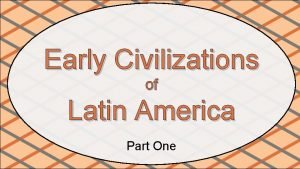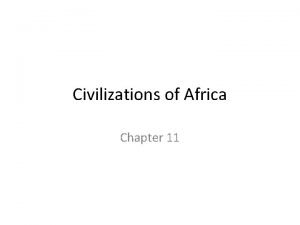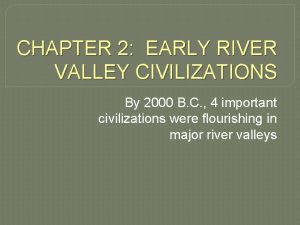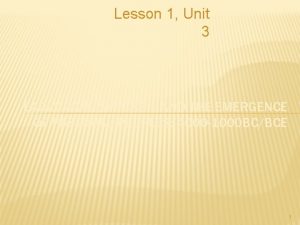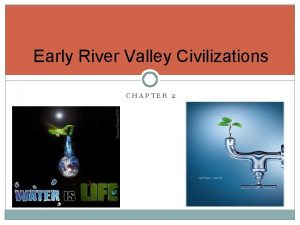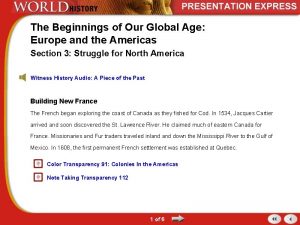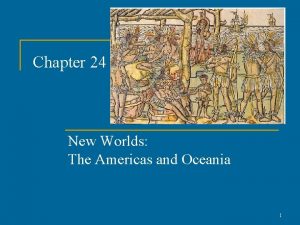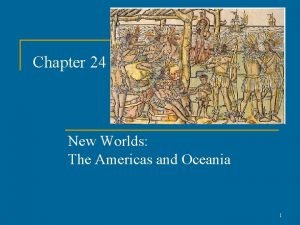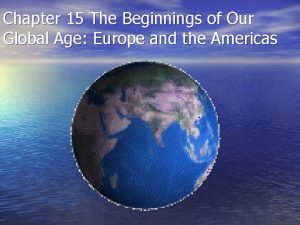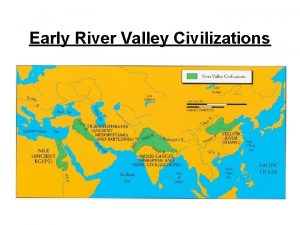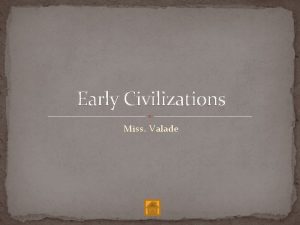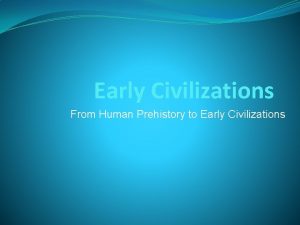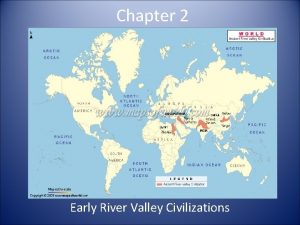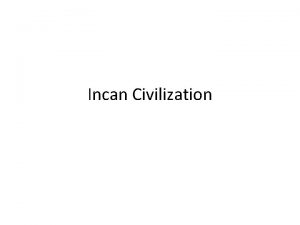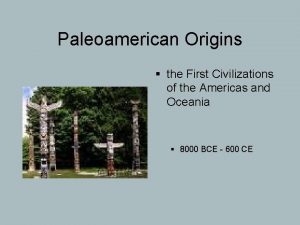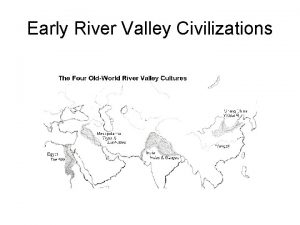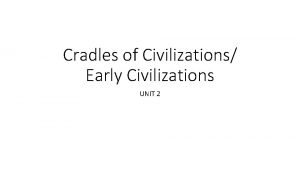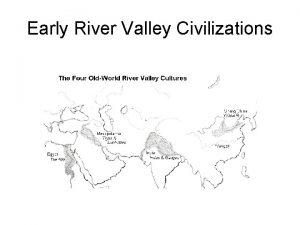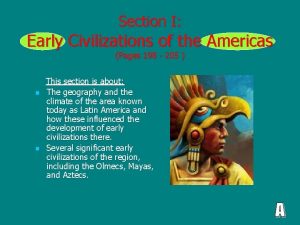The Americas Origins and Early Civilizations Origins Many















- Slides: 15

The Americas Origins and Early Civilizations

Origins } Many believe that the indigenous people of the American continent arrived in the area by crossing the Bering Land Bridge somewhere between 15, 000 and 20, 000 years ago.

Origins continued } These early people were hunters and gatherers. Eventually, they settled in areas and converted to an agricultural lifestyle.

There were a number of important empires in the Americas including: The Olmec } The Maya } The Aztec } The Inca }

The Olmec } The Olmec were one of the first major civilizations in mesoamerica. They created 8 foot tall stone heads that looked like their leaders.

Olmecs continued } The Olmecs are considered the “Mother culture” of the Americas. Through trade, they passed their culture to other societies. They were farmers who relied on flooding and good soil to start their society about 3, 000 years ago.

The Maya } Just like the Olmec, the Maya were farmers. They lived in present day Guatemala in an area known as the Yucatan Peninsula (near Cancun). This area included two geographic locations – highlands and lowlands.

Highlands: } The highlands had forested mountains and valleys. Volcanoes made the soil rich due to ash from their eruptions. This area was cool with distinct wet and dry seasons. Lowlands: } Hot and flat. Dry in the northern portion of the peninsula. Southern lowlands were wetter and greener. Thick rainforest blanketed this area.

Slash-and-burn } Due to difficult growing conditions in the rainforest, the Maya used this technique to cultivate (grow and produce) crops. They would cut down trees then burn them to enrich the soil.


The Maya civilization is broken up into 3 main periods: } Pre-Classic (1800 B. C. – A. D. 250 } Classic (250 – 900) } Post-Classic (9001520) }

Classic Maya } Built dozens of cities. Maya cities were home to complex societies. Nobles, priests, merchants, artists, and peasants gathered for religious ceremonies. Traveling Merchants linked Maya cities together with trade.

Classic Maya continued } For hundreds of years, the Mayas had a rich and vibrant culture…then between 800 -900 the civilization mysteriously fell into ruin. Some scholars believe warfare, food shortages and natural disasters like droughts may have caused the fall.

Post classic } However, the Maya civilization left behind many achievements examples are the earliest writing system of the area, accurate calendars, the concept of zero, and impressive pyramids structures that still stand to this day.

The end of the Maya } By the late 1400’s and early 1500’s when the Spanish came to the Americas, the Maya civilization was no longer a powerful empire. The Spanish were able to take over Maya cities and control them at will. However, that was not the case for the other Central American Empire to the north and west of the Maya – the Empire of the Aztecs…but that is a story for later.
 Inca diorama
Inca diorama Chapter 9 lesson 1 early civilizations
Chapter 9 lesson 1 early civilizations Chapter 11 section 1 early civilizations of africa
Chapter 11 section 1 early civilizations of africa Cahokia apush definition
Cahokia apush definition Chapter 2 early river valley civilizations
Chapter 2 early river valley civilizations Geographic luck definition
Geographic luck definition Lesson 1 early civilizations
Lesson 1 early civilizations Chapter 2 early river valley civilizations
Chapter 2 early river valley civilizations Early cpr and early defibrillation can: *
Early cpr and early defibrillation can: * The beginnings of our global age europe and the americas
The beginnings of our global age europe and the americas Chapter 24 the americas and oceania
Chapter 24 the americas and oceania Chapter 24 new worlds the americas and oceania
Chapter 24 new worlds the americas and oceania Chapter 24 the americas and oceania
Chapter 24 the americas and oceania Chapter 20 the americas and oceania
Chapter 20 the americas and oceania The beginnings of our global age europe and the americas
The beginnings of our global age europe and the americas State building in the americas and africa
State building in the americas and africa
